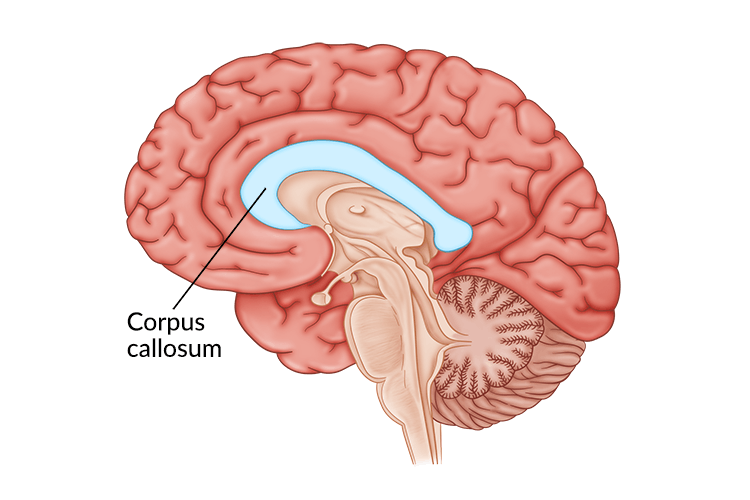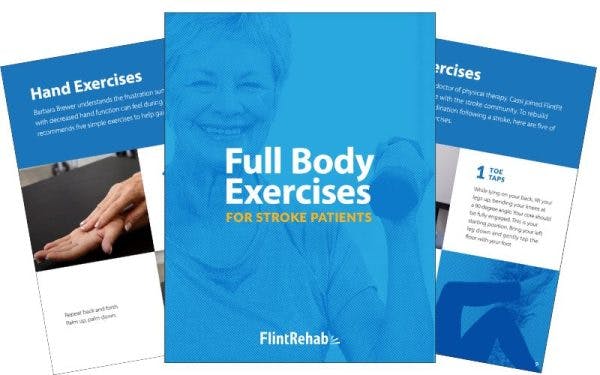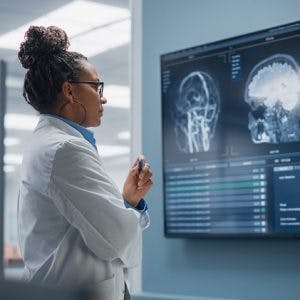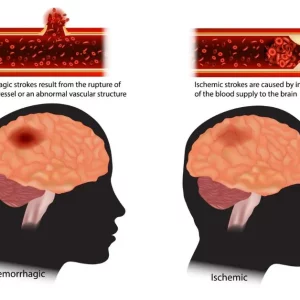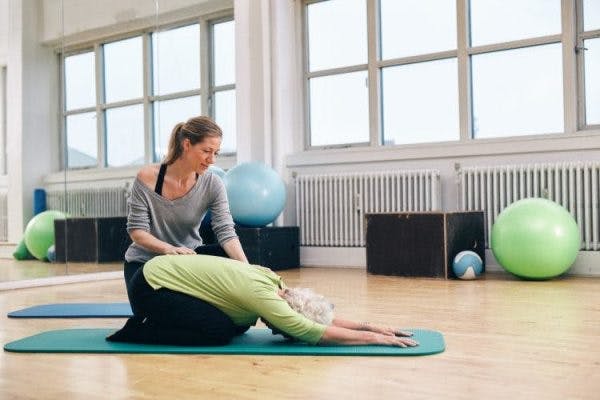The corpus callosum is a structure in the brain that transfers motor, sensory, and cognitive information between the left and right hemispheres. While a corpus callosum stroke is rare, it can result in a wide range of secondary effects such as difficulties with movement or visual processing. Fortunately, there is hope for recovery after corpus callosum stroke.
To help you understand what to expect after corpus callosum stroke, this article will discuss its:
Causes of Corpus Callosum Stroke
A stroke occurs when an artery in the brain is blocked (ischemic stroke) or bursts (hemorrhagic stroke). This disrupts blood flow within the brain, which results in cell deaths and loss of function.
When an individual sustains a corpus callosum stroke, it means that the supply of blood leading to the corpus callosum is disrupted. To stabilize blood flow and minimize permanent damage to the brain, immediate medical attention is essential.
Compared to other structures in the brain, the corpus callosum has an abundant blood supply because it receives blood from various arteries. As a result, corpus callosum strokes are rare and lack of blood supply is uncommon. However, when they do occur, corpus callosum strokes can affect a wide range of functions.
To get a better idea of what to expect following corpus callosum stroke, it helps to understand what the primary functions of the corpus callosum are.
Corpus Callosum Function
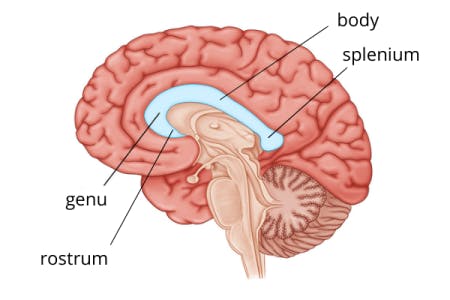
The corpus callosum is the largest white matter structure in the brain. It consists of nearly 200 million fibers that help transmit information between the left and right hemispheres. In other words, it’s what allows the two sides of the brain to communicate.
Additionally, the corpus callosum is divided into four parts: the rostrum, genu, body, and splenium. Each of these parts connects to different areas of the cerebral cortex such as the frontal lobe, temporal lobe, and occipital lobe. As a result, the corpus callosum plays a major role in coordinating movement and processing sensory information between the two hemispheres of the brain. It’s also suggested to play an important role in cognitive functions such as memory and planning.
When a stroke occurs in this area of the brain, the two hemispheres are unable to communicate. Consequently, it can lead to a wide range of secondary effects.
Effects of Corpus Callosum Stroke
Depending on which part of the corpus callosum is affected, various functions can be altered. Many consequences caused by corpus callosum strokes are related to difficulties coordinating and processing sensory information between both sides of the brain.
For example, individuals may experience dizziness due to difficulties processing visual information. Or, they may struggle with tasks that require fine motor skills due to difficulties coordinating small muscle movements.
Additional secondary effects of corpus callosum stroke include:
Gait Disorders
After a corpus callosum stroke, individuals may experience difficulties walking due to impaired communication between the two hemispheres of the brain.
The right side of the brain controls movement on the left side of the body, and the left side of the brain controls movement on the right. When information from both hemispheres cannot be processed together, individuals may struggle to coordinate their movements, leading to difficulties with gait and balance.
Tactile Anomia
Tactile anomia describes when an individual is unable to name an object by touch because tactile information cannot be transmitted between the two hemispheres of the brain. As a result, individuals may need to learn how to rely on their other senses to help them identify familiar objects.
Alien Hand Syndrome
Alien hand syndrome is a rare disorder that can occur after a corpus callosum stroke. When someone has alien hand syndrome, one of their hands (usually the left) involuntarily performs complex, goal-directed movements. In other words, the individual is not trying to perform these movements, yet they occur.
The form of alien hand syndrome most common after damage to the corpus callosum is called callosal dyspraxia. It refers to involuntary movements of the left hand that act in opposition to movements performed by the right hand. For example, if you use your right hand to put a sock on, your left hand may pull it off.
Visual Impairments
The corpus callosum plays a major role in combining visual information from both eyes. Due to impaired communication between the two hemispheres following corpus callosum stroke, visual impairments can result.
Fortunately, depending on the severity of the damage, there may be hope for recovering functions affected by corpus callosum stroke.
Treatment for Corpus Callosum Stroke
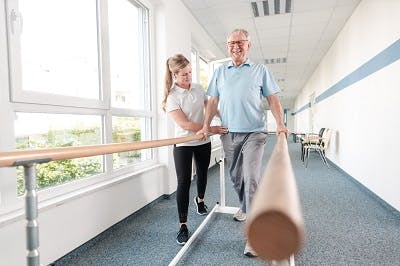
Every stroke is unique and results in different outcomes. Therefore, a personalized approach to treatment that addresses each individual’s specific complications is ideal.
It’s important to note that most corpus callosum strokes are not isolated and nearby brain structures are often damaged as well. This can lead to additional complications that must also be addressed in treatment.
Recovery after corpus callosum stroke will primarily focus on teaching individuals how to maximize their functional abilities and promoting neuroplasticity. Neuroplasticity refers to the brain’s ability to make adaptive changes and reorganize its neural pathways. It allows for functions affected by stroke to be reorganized to unaffected areas and strengthened through consistent and intensive practice.
To promote neuroplasticity, you must engage in specific and repetitive practice of affected functions. Consistently practicing affected functions stimulates the brain and reinforces demand for those functions. The more you practice, the more neuroadaptive changes occur.
Effective ways to target functions affected by corpus callosum stroke can be learned at rehabilitative therapies.
Rehabilitation for Corpus Callosum Stroke
Participating in rehabilitative therapies after corpus callosum stroke is an excellent way to get the personalized treatment you need to promote neuroplasticity and recover.
Some rehabilitative interventions that can help promote recovery from corpus callosum stroke include:
- Physical therapy can help corpus callosum stroke survivors practice targeted exercises to improve their bilateral coordination skills. For example, you may participate in gait training. This is a type of PT that specifically focuses on developing walking skills. Directly practicing the skills you want to improve will encourage the brain to rewire itself and strengthen those new connections.
- Occupational therapy teaches individuals effective ways to become as functional as possible by practicing activities of daily living such as performing transfers, grooming, and bathing. It can also involve learning how to use adaptive tools and other compensatory techniques to help you become as independent as possible.
- Speech therapy can help individuals develop their speech, chewing, and swallowing skills if coordination of the oral muscles is affected. Additionally, a speech therapist can also help individuals address cognitive impairments such as memory problems.
- Vision training can help individuals work on regaining eyesight after stroke. This may involve practicing eye exercises or learning how to pay more conscious attention to their surroundings.
After a stroke, individuals often participate in the appropriate therapies by working with a therapist through inpatient rehabilitation, where they accomplish many hours of therapy per day. Once discharged from inpatient rehab, individuals must continue therapy both at an outpatient therapy clinic and, most importantly, on their own at home.
Staying motivated at home can be challenging. Fortunately, this is where interactive neurorehabilitation devices can help. For example, Flint Rehab’s FitMi home therapy helps transform rehab exercises into a gamified experience. This helps survivors accomplish more repetition and consistency than simply following a written sheet of exercises.
Keeping the brain stimulated helps promote neuroplasticity and improve desired functions. However you participate in rehabilitative therapies, consistency and repetition are the key to a successful recovery from a corpus callosum stroke.
Corpus Callosum Stroke: Key Points
The corpus callosum is responsible for sending information between the left and right hemispheres of the brain. Although corpus callosum strokes are extremely rare, they can affect a wide range of functions. Generally, the effects of corpus callosum stroke are associated with difficulties coordinating movements between the two sides of the body or processing sensory information.
Fortunately, by participating in consistent, repetitive, and specific practice of affected functions, there is potential for recovery.
